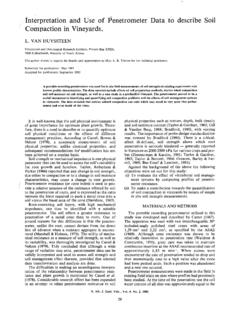Transcription of Physical, mechanical, and hydraulic properties of …
1 physical , mechanical , and hydraulic properties of coal refuse for slurry impoundment design Hegazy, Cushing, & Lewis D'Appolonia Engineering, Monroeville, PA, USA. Keywords: coal, refuse, tailings, slurry, dam, impoundment, strength, permeability ABSTRACT: Coal mining processes result in two general types of by-products: coarse coal refuse (CCR), a mixture of soil and rock commonly used to construct an impoundment coal refuse dam or embankment, and fine coal refuse (FCR) slurry, a mixture of soil, rock dust, coal fines and water that is pumped into such an impoundment. The physical , mechanical , and hydraulic conductivity properties of CCR and FCR are critical in designing coal refuse disposal dams and impoundments for both static and seismic stability. This paper provides a summary of laboratory and in-situ strength, and hydraulic conductivity test results performed on CCR and FCR in association with the design and construction of several coal refuse dams and impoundments in England and Western Pennsylvania in the United States.
2 Predominant mean values and statistical variabili- ties are reported for each material property. These parameters are subsequently employed in a simple statisti- cal model to evaluate the reliability of the design of coal refuse impoundments. FCR is a major consideration in the prediction of 1 INTRODUCTION. seepage conditions, designing internal drains, as- sessing the dynamic response of the dam and FCR. Coarse coal refuse (CCR) is commonly used to con- foundation, assessing liquefaction susceptibility, and struct dams to retain a slurry of fine coal refuse evaluating static and seismic upstream slope stabil- (FCR) and water. A site investigation, and in-situ ity. and laboratory testing programs are customarily per- In the construction of upstream CCR embank- formed to determine the necessary material proper- ments, the FCR constitutes much of the embankment ties for static and seismic design of the dam.
3 Physi- foundation, and is partly replaced by, mixed with, cal properties include, but are not limited to, specific and compressed by the CCR fill. This results in the gravity, water content, unit weight, and grain size formation of a suitable foundation to support the up- distribution, in addition to the plastic and liquid lim- stream embankment. The alteration of the FCR. its for FCR. The primary mechanical and hydraulic foundation during the upstream construction process properties include, but are not limited to, the shear results in a more stable configuration than is often strength and permeability or hydraulic conductivity suggested by upstream slope stability analyses that of the refuse, respectively. assign FCR properties to the entire foundation ( , The CCR properties are often characterized the entire zone below the FCR surface at the onset of through in-situ permeability testing and laboratory upstream construction).
4 Geotechnical testing (index, strength, and permeabil- ity tests) of reconstituted samples, which sometimes includes resonant column testing, as necessary, to address seepage through the dam, design internal 2 DATABASE. drains, assess the dynamic response of the dam, and evaluate static and seismic slope stability. In-situ A database was developed from geotechnical inves- testing, such as, seismic piezocone testing, is widely tigations of existing coal refuse disposal sites in used to characterize FCR behavior with respect to Western Pennsylvania of the USA and England, and equivalent soil type, static and dynamic properties consists of test data from project files prepared by (including shear strength and shear wave velocity) the authors over several years, and test data col- and permeability. These data for FCR are especially lected by Chen (1976).
5 In-situ samples were col- important for upstream dam construction, as the lected from the sites using disturbed methods, such as bucket samples from test pits and FCR deltas, and Samples of CCR are collected from the density test split spoon samples from boreholes, and using un- location and sent to a laboratory for a moisture con- disturbed sampling methods using Shelby tubes and tent determination and to estimate the CCR d. Ta- Denison tube samplers. These samples were tested ble 2 summarizes the AVG, STDEV and COV of the in laboratory to identify the physical and mechanical CCR t, d and Gs. The coefficients of variations properties of coal refuse materials. In-situ testing summarized in Table 2 indicate low variability of was performed, including seismic piezocone tests CCR t and d and moderate variability of CCR Gs and falling head field permeability tests in CCR.
6 And water content (w). Also, pore pressure dissipation tests were performed Tables 1 and 2 indicate that the Gs values of FCR. during the cone penetration tests to study the rate of and CCR are relatively low, averaging and , consolidation of the FCR. respectively, because of the carbon content. How- ever, for most natural soils, the Gs is on the order of to Figure 1 shows the increase in Gs as the carbon content decreases in the FCR and CCR sam- 3 INDEX AND CLASSIFICATION. ples. properties . The consistency of FCR samples is determined based on measured Atterberg limits. Table 3 sum- One of the first steps in geotechnical investigation marizes the water content (w), liquid limit (LL), program for a coal refuse disposal facility is to iden- plastic limit (PL) and plasticity index (PI) results, tify the index properties of the coal refuse and foun- which indicate, on the average, a clayey soil of low dation materials, including unit weight and specific plasticity.
7 However, some FCR samples were non- gravity, grain size distribution, and the plasticity of plastic and classified as silty soil. fine materials. For soft soils, the unit weight is typi- Grain size distributions of coal refuse samples cally measured from undisturbed Shelby-tube sam- were obtained using sieve analysis . For FCR sam- ples. In the case of hydraulically deposited FCR, it ples, Figure 2 shows these sieve analysis results, and is very difficult to obtain undisturbed samples from Table 4 summarizes the percent passing sieve #200. the slurry impoundment. Since recently pumped ( mm) and selected particle sizes in mm: D10, fines cannot support a vehicle or an equipment sur- charge, a work platform of CCR is typically con- D30, D50 and D60 corresponding to percent passing of structed over the settled FCR to gain access for in- 10%, 30%, 50% and 60%, respectively.
8 Figure 2 in- situ sampling and testing. During construction of dicates a wide range of variability for the FCR grain the work platform, the underlying FCR or fines are size distribution due to its placement method, as ex- partly displaced, intermixed with the CCR, and plained herein. FCR is the product of extracting, compressed to form a relatively stable surface for a crushing, and cleaning the raw coal. The FCR slurry drill rig or a cone truck to drive on. The process of is typically pumped upstream of the main dam. The constructing the work platform and the attendant al- coarser material settles out more quickly nearer the teration of the FCR foundation is analogous to the discharge location (customarily near the upstream of initial phase of upstream embankment construction. the dam), forming a fines delta or beach. The finer Therefore, the sampled FCR is altered and improved material migrates throughout the impoundment, as it by the surcharge effect of the work platform.
9 In the takes longer to settle out. Therefore, samples col- case of extensive upstream construction, FCR might lected from or closer to the delta are predominantly extend beneath the crest of the CCR dam and also sand and silt size material, whereas samples col- require investigation. In the latter case, the FCR has lected away from the delta are predominantly silt consolidated under its own weight and the overbur- and clay size material. den of the CCR embankment. A summary of the FCR total unit weight ( t), dry Table 1. Summary of FCR unit weight and specific gravity. unit weight ( d) and specific gravity (Gs) data is Property Average Standard Coefficient shown in Table 1, including the average (AVG), deviation of variation standard deviation (STDEV) and coefficient of T (kN/m3) D (kN/m3) variation (COV) of each property. Typically, coef- Gs ficients of variations below 10% are thought to be low, between 10% and 30% moderate, and above 30% high (Harr, 1987).
10 Table 1 indicates low vari- Table 2. Summary of in-place CCR unit weight, specific grav- ability of the FCR t and moderate variability of the ity and water content. FCR d and Gs. Property Average Standard Coefficient deviation of variation The total unit weight of CCR in-place typically is T (kN/m3) measured using nuclear density gauge as a quality D (kN/m3) control measure for CCR compaction during con- Gs struction of the impoundment embankment (dam). w % Table 3. Summary of FCR Atterberg limits and water content. property Average Standard Coefficient % deviation of variation % Fixed carbon = ln(Gs) + LL r2 = PL PI w Table 4. Summary of FCR sieve analysis . particle size Average Standard Coefficient or % passing deviation of variation D10 (mm) D30 (mm) D50 (mm) D60 (mm) Passing sieve (%) 200 ( mm). Figure 1. Effect of carbon content on specific gravity of coal refuse material.
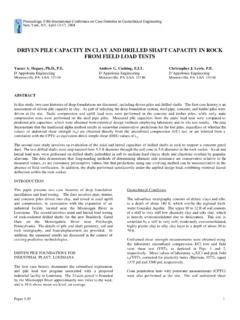
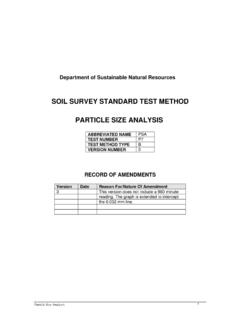
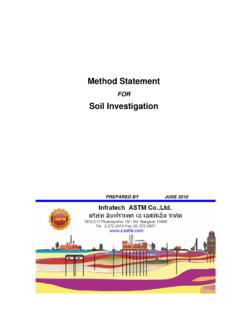
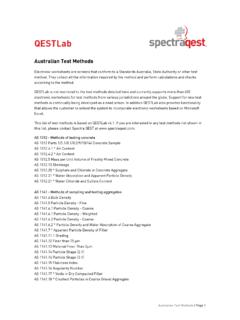
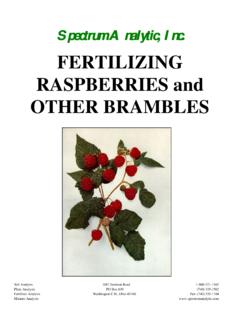
![CFED Phase IV Final Report V[10]](/cache/preview/a/4/7/c/4/e/0/f/thumb-a47c4e0fdbaba3f9a2b52c184a425d9f.jpg)
